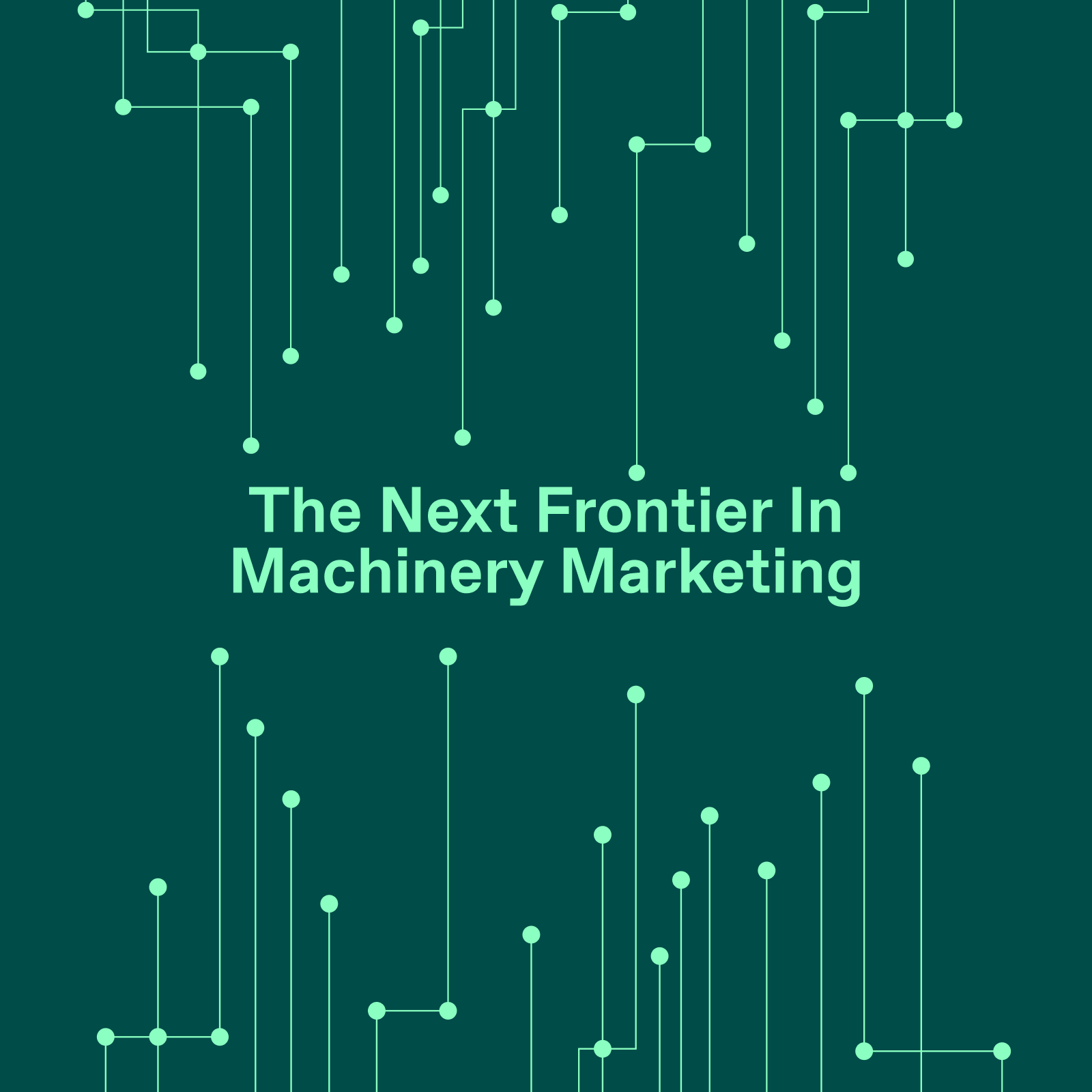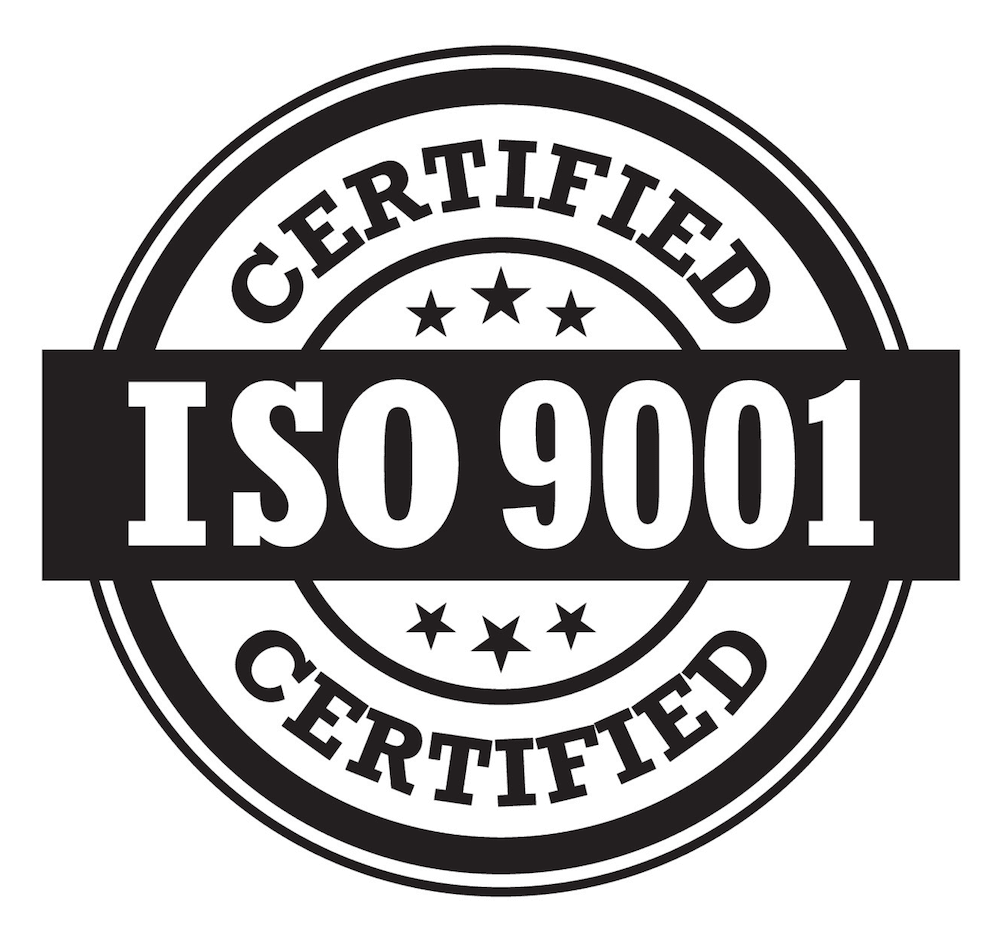Back to Blog
The next frontier in machinery marketing: Harnessing AR/VR for immersive engagement
Kamil Baczyński, Marcin Gniatczyk - 12 February 2024 - 11 min read

Reading time: 11 mins
Augmented reality (AR) and virtual reality (VR) are revolutionising machinery marketing, signalling a move away from traditional methods that depended on physical demonstrations and standard media. We're entering an era where AR and VR aren't just supplementary technologies, but key drivers that are transforming how we engage with customers. This exploration will highlight the role of AR and VR in machinery marketing, showcasing how they turn passive viewers into engaged participants, immersing them in a rich, interactive experience.*
Give your eyes a break without missing out.
Enjoy the audio version:
Transforming Training and Education in Machinery with AR/VR
The machinery domain, with its complexity, benefits greatly from immersive technologies, offering game-changing virtual training environments. These digital realms enable learners to interact with life-like machinery models without the risks associated with physical machinery operation.
Imagine operators and technicians being able to practice on virtual machinery models that are true-to-life replicas. AR overlays digital instructions and real-time data onto actual machinery or workstations. This advanced approach to training enhances understanding and retention of complex procedures and safety protocols, significantly reducing the learning curve. For example, VR simulations allow workers to practice the operation of heavy machinery in various scenarios, including emergency situations, without the actual risks involved. These simulations are not just hypothetical; companies like Walmart have successfully implemented VR for employee training since 2017, underscoring its effectiveness and impact.
Moreover, the use of AR in assembly, maintenance, and quality control streamlines these processes by providing real-time, interactive guidance. This diminishes the frequency of errors and enhances overall productivity. By employing AR, companies can ensure that even the most complex tasks are performed with precision, thereby elevating the quality of work and reducing costly downtimes. In essence, AR and VR are not just transforming how machinery is marketed; they're revolutionising the entire spectrum of training and education in the machinery sector. This shift not only prepares a more skilled workforce but also opens up new avenues for interactive marketing strategies, where potential clients can experience the machinery in a virtual setting, gaining confidence in its capabilities and functionality.
Crafting rich, multi-sensory experiences with AR/VR in machinery marketing
Beyond visual engagement, immersive technologies enrich machinery marketing with multi-sensory experiences, employing haptic feedback and spatial audio to simulate a more lifelike interaction with machinery.
Consider the power of haptic feedback in a VR environment where a customer can 'feel' the machinery. The tactile sensation of pressing a button or the vibration of a machine at work can be simulated. This level of interaction is invaluable, especially in an industry where touch and feel play a crucial role in understanding a machine's quality and capabilities. For example, imagine a scenario where a potential buyer, through VR, 'feels' the smooth operation of a new excavator model, or experiences the force exerted by an industrial press – all within a safe, virtual environment. Spatial audio further enriches this experience. In a VR simulation, directional and environmental sounds can be so precise that they mimic real-life acoustics. This auditory detail helps potential buyers understand how loud a machine is, how it sounds during different operations, or even identify potential issues based on auditory cues.
While olfactory stimulation in VR is still in its nascent stages, the potential it holds is enormous. Imagine a scenario where a buyer can smell the materials or lubricants used in the machinery, adding another layer to the authenticity of the virtual experience. This multi-sensory approach in marketing does more than just demonstrate a product; it immerses potential customers in the experience, allowing them to interact with products in ways previously unimaginable. This not only fosters a deeper understanding of the machinery but also builds a stronger emotional connection with the product, enhancing customer engagement and satisfaction.
Mixed reality - the ultimate fusion for machinery marketing
Mixed reality, blending the digital and physical, emerges as a compelling approach in machinery marketing, providing customers with a seamless, interactive experience that bridges virtual operations with real-world contexts. For marketers in the machinery industry, this fusion offers an unparalleled opportunity to showcase products in a unique and highly interactive manner.
Imagine a scenario where a customer wears MR glasses to see a life-sized, 3D model of machinery superimposed onto their actual physical environment. They can walk around it, observe it from different angles, and even interact with its components as if it were right there in their space. This level of interaction facilitates a deeper understanding of how the machinery operates within the context of the customer’s own environment.
The convergence of AR and VR in MR also enhances spatial understanding and object interaction, making the experience far more realistic. For example, customers can virtually operate machinery, getting a feel for its size, ergonomics, and functionality, which is especially crucial for large or complex machines that are difficult to demonstrate in a traditional setting.
This immersive experience doesn’t just educate - it captivates. It allows customers to experience machinery in a manner that's both innovative and informative. By leveraging MR, machinery marketers can create memorable and impactful experiences that go beyond traditional marketing, fostering a stronger connection between the customer and the product.
Moreover, as MR technology continues to advance, we can expect to see even more creative applications in machinery marketing. These could range from interactive virtual showrooms to collaborative design sessions where customers can provide real-time feedback on machinery prototypes, further bridging the gap between manufacturers and end-users.
In summary, MR is not just a new marketing tool; it's a transformative approach that redefines customer engagement in the machinery industry, offering interactive and immersive experiences that resonate deeply with potential buyers.

Eager to learn more? Download 2024 trends in machinery industry
AR/VR in action. Real-world applications in the machinery sector
The true potential of any technology is best understood through its real-world applications. In the machinery industry, AR and VR are not just concepts but practical tools already transforming operations and marketing strategies. Let’s analyze how businesses are utilising AR and VR, showcasing their tangible impact and potential.
One of the standout applications of AR in the industry is in remote maintenance and collaborative design. For instance, a technician wearing AR glasses can receive real-time guidance from experts located remotely. This approach has been effectively demonstrated by Oculavis, which uses AR for remote maintenance, allowing technicians to collaborate with off-site experts who can provide virtual instructions and annotations overlaid on the technician's view.
Another significant application is in factory layout planning and operator training. Using VR, stakeholders can virtually explore and interact with a planned layout, gaining a realistic sense of scale and perspective. This helps in optimizing designs and facilitates collaborative decision-making. Additionally, AR can be used to provide operators with real-time, contextual information on equipment, enhancing their understanding of complex machinery operations. This dual approach to design and training not only increases efficiency but also ensures precision in operations.
Furthermore, AR/VR technologies have been instrumental in enhancing safety protocols. By simulating hazardous scenarios in a VR environment, workers can practise and prepare for emergencies without any risk. This application is not only innovative but also crucial in an industry where safety is paramount.
These real-world examples demonstrate the versatility and effectiveness of AR and VR technologies in the machinery sector. They highlight the technologies' ability to streamline operations, enhance training and safety protocols, and provide innovative solutions to complex challenges.
As these technologies continue to evolve, we can expect to see an even broader range of applications emerge, further solidifying AR and VR as essential tools in the machinery industry’s future. This ongoing evolution presents a wealth of opportunities for marketers to showcase their products in ways that are both innovative and deeply resonant with their target audiences.
Overcoming Adoption Barriers and Leading the AR/VR Revolution in Machinery Marketing
As we embrace the innovative horizons AR and VR technologies offer, it's crucial to address the challenges that come with their adoption in the machinery sector. These challenges, primarily centred around a lack of awareness and experience, are significant yet surmountable obstacles on the path to fully integrating these technologies into mainstream marketing strategies.
-
Educating the market: A primary barrier is the general lack of understanding of AR/VR potential and capabilities among businesses in the machinery sector. To overcome this, it's essential to educate the market. This can be achieved through workshops, webinars, and live demonstrations showcasing the practical applications and benefits of AR/VR technologies. Providing clear, tangible examples of how AR/VR can enhance marketing and operational efficiency will help demystify these technologies and encourage adoption.
-
Showcasing success stories: Real-life case studies and success stories play a key role in illustrating the effectiveness of AR/VR in machine marketing. Sharing stories such as Oculavis successfully implementing AR for remote maintenance can inspire confidence and provide a roadmap for implementation.
-
Fostering partnerships and collaborations: Building collaborations between AR/VR technology providers and machinery manufacturers can accelerate innovation and adoption. These partnerships can lead to the development of customized AR/VR solutions tailored to specific machinery marketing needs, thereby showcasing the versatility and adaptability of these technologies in real-world scenarios.
-
Investing in skills development: To fully leverage AR/VR technologies, companies must invest in skill development and training. This includes not just training the marketing and sales teams but also equipping designers and technicians with the knowledge to create and implement AR/VR content effectively.
-
Embracing a forward-thinking mindset: Finally, it’s about fostering a culture that is open to innovation and change. Embracing AR and VR technologies requires a forward-thinking mindset, willing to explore and experiment with new ways of product demonstration and customer engagement.
By addressing these challenges and adopting a proactive approach with a marketing consultancy London, companies in the machinery sector can not only enhance their marketing strategies but also position themselves as leaders in the adoption of AR/VR technologies. As we move further into this era of digital transformation, the ability to adapt and innovate will become increasingly vital in staying competitive and relevant in the machinery market.
The integration of immersive technologies into machinery marketing heralds a new era of immersive customer engagement. As we've explored, these tools not only enhance the marketing experience but also offer tangible benefits across training, operations, and brand interaction. For those ready to navigate and master these changes, Rhapsody's comprehensive Trend Sheet is your essential guide. It's filled with insights, detailed analysis and actionable insights designed to help you realise the full potential of the latest developments in your marketing efforts. Join us on this adventure and together let's change the future of machine marketing.
Rhapsody Media takes the weight off your shoulders. We get your marketing running smoothly, ensuring you can focus on the big picture while we handle the nitty-gritty with minimal need for your intervention. Sleep easy knowing we're not just your agency; we're your partner in driving success.
Get the email newsletter and unlock access to members-only content and events.
The Frames, 201–202, 2nd Floor,
1 Phipp Street, London, EC2A 4PS, UK

Talk to us
Button TextCopyright ©2024 Rhapsody Ltd. All rights reserved.

The Frames, 201–202, 2nd Floor,
1 Phipp Street, London, EC2A 4PS, UK

Copyright ©2024 Rhapsody Ltd. All rights reserved.
